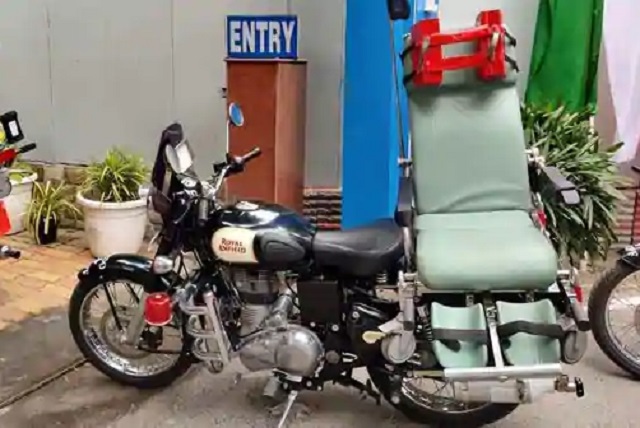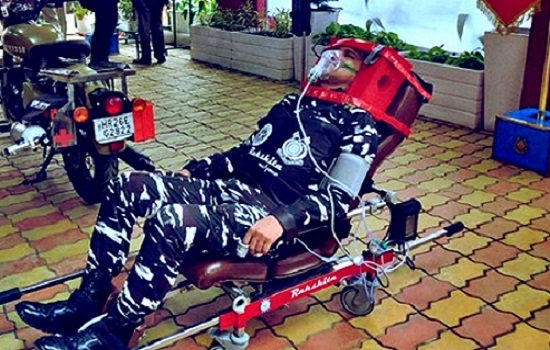Why in News?
As many as 21 Rakshita bike ambulances were inducted into the Central Reserve Police Force, CRPF on January 18, 2021. This is to be used for the evacuation of the security forces injured personnel from the remotest of the regions.
Chairman of DRDO Dr G. Satheesh Reddy appreciated the efforts of scientists for this indigenous and cost-effective solution to a common challenge faced by the security forces.
About Rakshita Bike Ambulance:
- Dr AP Maheshwari, who is the DG CRPF and Dr AK Singh who is the DS and DG (LS), DRDO are responsible for the bike and unveiled it at CRPF Headquarters in New Delhi.
- The 350 CC Royal Enfield classic bikes would be used as Rakshita Ambulances.
- Institute of Nuclear Medicine and Allied Sciences has been involved in the manufacturing of the ambulances. It is the Scientific research body under DRDO.

Rakshita Bike Ambulance: Salient Features
- Rakshita is fitted with a customized reclining Casualty Evacuation Seat (CES), which can be fitted in and taken out as per requirement.
- Some major features are the head immobilizer and the safety harness jacket
- It also has hand and foot straps for safety along with an adjustable footrest
- It consists of a physiological parameter measuring equipment with wireless monitoring capability and auto warning system for the driver.
- The vital parameters of the patient could be easily monitored on the dashboard-mounted LCD.
- The bike is also equipped with an air splint, medical and oxygen kit for on-spot medical care.

Rakshita Bike Ambulance: Significance
- The bike would help the paramilitary forces from remote locations to be taken for medical help sooner
- This bike ambulance is useful not only for the paramilitary and military forces but has potential civil applications too, where the terrains do not allow a four-wheeled service
- The ambulance has features that are relevant and not bulky
- It would be easier for the personnel to reach the patient and victims with ease and would be cost-effective
As said by CRPF Deputy Inspector General M. Dhinakaran, “the equipment make 'Rakshita' an on the spot medical care and injured transport system which is not just indigenous and cost-effective, but can also reach inaccessible or remote locations by traversing unmotorable roads, narrow streets, congested or unpaved roads that are otherwise inaccessible by the conventional four-wheeled ambulances.”
Comments
All Comments (0)
Join the conversation